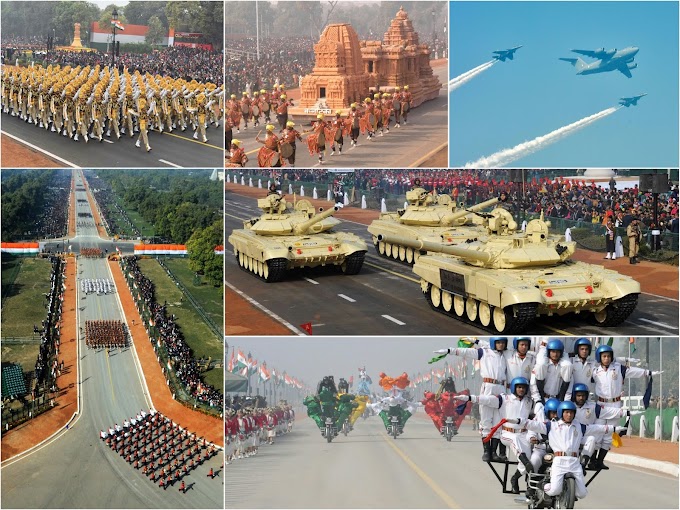All books are here
Watch , Read and Buy
As a physical object, a book is a stack of usually rectangular pages (made of papyrus, parchment, vellum, or paper) oriented with one edge tied, sewn, or otherwise fixed together and then bound to the flexible spine of a protective cover of heavier, relatively inflexible material. The technical term for this physical arrangement is codex (in the plural, codices). In the history of hand-held physical supports for extended written compositions or records, the codex replaces its immediate predecessor, the scroll. A single sheet in a codex is a leaf, and each side of a leaf is a page.
RAMAYAN
Ramayan is written by Tulsidas .

The Ramayana is one of the largest ancient epics in world literature. It consists of nearly 24,000 verses (mostly set in the Shloka/Anustup meter), divided into seven Khandas (adi kanda, ayodhya kanda, aranya kanda, kishkindhya kanda, sundara kanda, lanka kanda and uttara kanda) and about 500 sargas (chapters). In Hindu tradition, it is considered to be the adi-kavya (first poem). It depicts the duties of relationships, portraying ideal characters like the ideal father, the ideal servant, the ideal brother, the ideal husband and the ideal king. Ramayana was an important influence on later Sanskrit poetry and Hindu life and culture. Like Mahabharata, Ramayana presents the teachings of ancient Hindu sages in narrative allegory, interspersing philosophical and ethical elements. The characters Rama, Sita, Lakshmana, Bharata, Hanuman, and Ravana are all fundamental to the cultural consciousness of the South Asian nations of India, Nepal, Sri Lanka, and the South-East Asian countries of Thailand, Cambodia, Malaysia, and Indonesia.
MAHABHARAT
Mahabharat is written by maharshi vyas .

The Mahābhārata : महाभारतम्,
SATYA NA PRAYOGO
Satya na prayogo is written by our national father Mohandas Karamchand Gandhiji The Story of My Experiments with Truth is the autobiography of Mohandas K. Gandhi, covering his life from early childhood through to 1921. It was written in weekly installments and published in his journal Navjivan from 1925 to 1929. Its English translation also appeared in installments in his other journal Young India. It was initiated at the insistence of Swami Anand and other close co-workers of Gandhi, who encouraged him to explain the background of his public campaigns. In 1999, the book was designated as one of the "100 Best Spiritual Books of the 20th Century" by a committee of global spiritual and religious authorities.
Bhagavad Gita: Yatharoop (Hindi)
The narrative in the Bhagavad-Gītā concerns a dialogue between Lord Krishna and a mighty warrior named Arjuna on the battlefield of Kurukshetra. In the narrative, Lord Krishna has descended to earth to aid Arjuna in his battle against Kauravas and their army. Lord Krishna assumes the role of Arjuna's chariot driver and aids him in the battle and reveals to Arjuna several divine truths about human existence in the material plane, the true nature of the supreme personality of God, and the method of eternal progression and release from the earthly cycles of death and rebirth through the practice of bhakti yoga.
The narrative teaches that achieving Krishna consciousness and attaining the inner realization that all life is a manifestation of the eternal energy of Krishna will release an individual soul from the cycles of reincarnation and death and rebirth.
The narrative culminates with Krishna revealing to Arjuna his universal form which encompasses all life and material existence. One notable event in the narrative is when Arjuna gazes at the opposing army of demons and sees his relatives fighting for the demonic army, he is filled with grief and remorse that he must kill his own flesh and blood. In reply, Krishna reveals his true form to Arjuna and tells him that it does not matter if his relatives die in the battle today because they will eventually die anyway, and that Arjuna's duty to the supreme lord and his own self-realization transcends his material attachments to his relatives.
The central message of the text is that nothing ever truly dies and that all life is in a continual cycle of death and rebirth, and that one has a duty to the process of self-realization and progression in order to manifest the supreme personality of God and achieve Krishna Consciousness, thereby escaping the eternal cycles of death and rebirth.
The narrative teaches that achieving Krishna consciousness and attaining the inner realization that all life is a manifestation of the eternal energy of Krishna will release an individual soul from the cycles of reincarnation and death and rebirth.
The narrative culminates with Krishna revealing to Arjuna his universal form which encompasses all life and material existence. One notable event in the narrative is when Arjuna gazes at the opposing army of demons and sees his relatives fighting for the demonic army, he is filled with grief and remorse that he must kill his own flesh and blood. In reply, Krishna reveals his true form to Arjuna and tells him that it does not matter if his relatives die in the battle today because they will eventually die anyway, and that Arjuna's duty to the supreme lord and his own self-realization transcends his material attachments to his relatives.
The central message of the text is that nothing ever truly dies and that all life is in a continual cycle of death and rebirth, and that one has a duty to the process of self-realization and progression in order to manifest the supreme personality of God and achieve Krishna Consciousness, thereby escaping the eternal cycles of death and rebirth.
The Sundara Kanda forms the heart of Valmiki's Ramayana and consists of a detailed, vivid account of Hanuman's adventures. After learning about Sita, Hanuman assumes a gargantuan form and makes a colossal leap across the ocean to Lanka after defeating Surasa, the Mother of the Nagas and Sinhika, who is sent by the Devtas.
In Lanka, Hanuman hears Rama's chant from Vibhishana. Vibhishana recognizes Hanuman as a devoted Ram Bhakt (devotee). From Vibhishana, Hanuman comes to know location of Sita in Ashok Vatika.
In the Ashok Vatika, Sita is wooed and threatened by Ravana and his demon mistresses to marry Ravana. Hanuman reassures her, giving Rama's signet ring as a sign of good faith. He offers to carry Sita back to Rama, however she refuses, reluctant to allow herself to be rescued by any one, other than her husband. She says that Rama himself must come and avenge the insult of her abduction.
Hanuman then wreaks havoc in Lanka by destroying trees and buildings, and killing Ravana's warriors. He allows himself to be captured and produced before Ravana. He gives a bold lecture to Ravana to release Sita. He is condemned and his tail is set on fire, but he escapes his bonds and, leaping from roof to roof, sets fire to Ravana's citadel and makes the giant leap back from the island. The joyous search party returns to Kishkindha with the news.

Ramcharitmanas
श्रीरामचरितमानस, : ŚrīRāmacaritamānasa), is an epic poem in the Awadhi language, composed by the 16th-century Indian bhakti poet Goswami Tulsidas (c. 1532–1623). Ramcharitmanas literally means "Lake of the deeds of Rama". Ramcharitmanas is considered one of the greatest works of Hindi literature. The work has variously been acclaimed as "the living sum of Indian culture", "the tallest tree in the magic garden of medieval Indian poetry", "the greatest book of all devotional literature" and "the best and most trustworthy guide to the popular living faith of the Indian people".
transliterated in two ways. Using the IAST transliteration scheme, the name is written as Tulasīdāsa, as pronounced in Sanskrit. Using the Hunterian transliteration scheme, it is written as Tulsidas or Tulsīdās, as pronounced in Hindi). Tulsidas was a great scholar of Sanskrit. However, he wanted the story of Rama to be accessible to the general public and not just the Sanskrit-speaking elite. In order to make the story of Rama as accessible to the layman as to the scholar, Tulsidas chose to write in Awadhi which was the language of general parlance in large parts of north India at the time. Tradition has it that Tulsidas had to face a lot of criticism from the Sanskrit scholars of Varanasi for being a bhasha (vernacular) poet. However, Tulsidas remained steadfast in his resolve to simplify the knowledge contained in the Vedas, the Upanishads and the Puranas to the common people. Subsequently, his work was accepted by all.
Ramcharitmanas, made available the story of Rama to the common man to sing, meditate and perform on. Ironically, when he wrote it, Tulsi was ostracized by Hindu fundamentalists (then represented by local priests) for having "corrupted" an epic written in Sanskrit. The writing of Ramcharitmanas also heralded many a cultural tradition, most significantly that of the tradition of Ramlila, the dramatic enactment of the text.[6] Ramcharitmanas is considered by many as a work belonging to the Sagunaschool of the Bhakti movement in Hindi literature.

Kalki
After a defeat at the hands of Lord Kali, Kalki Hari must journey towards the Mahendragiri mountains with his companions to finally become the avatar he is destined to be. But the road ahead is not without peril .
Not only is he trapped by the cannibalistic armies of the Pisach, he is also embroiled in the civil war of the Vanars. And in midst of all this, he meets a face from the legends.
Meanwhile, Manasa, the sister of the late Vasuki, plots to overthrow Lord Kali by bringing a massive war to his kingdom. But Naagpuri, her homeland, has been infiltrated by their sworn enemy, the Suparns. Not only does she need to protect her kingdom from the Suparns, she must also protect her close ones from the league of conspirators at her own home. Who can she really trust? And will she be able to put an end to Lord Kali’s rule?
As the plot thickens and Lord Kali sees his ambition crushed right before his eyes, he comes to know about his race and its history that threatens to destroy the very fabric of this world’s reality. Kalyug has begun
Can Kalki become the avatar in time before it finally unfolds? Will Manasa fight through the internal politics to bring an invasion against Lord Kali? Can the secret that changes everything change Lord Kali as a person too?













0 Comments
Thank you